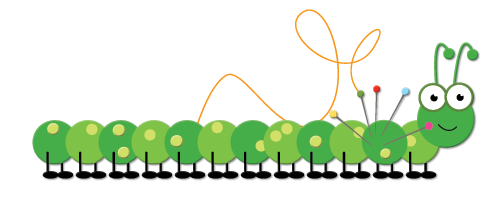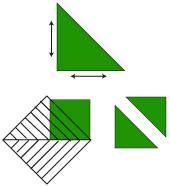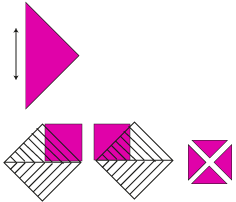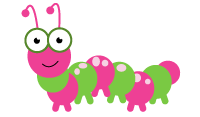


Setting Blocks on Point
Quilts with blocks set on point have triangular openings around their outer edges where each diagonal row of blocks ends. You can assemble triangular half-blocks to fill in the spaces, but quilters often use large fabric triangles instead.
Two types and sizes of triangles are used to fill in the blanks. One size fits into the gaps along the top, bottom and sides of the quilt. Four smaller triangles are used to create the quilt's corners.
Rotary Cut Half Square Triangles (setting triangles)

Cut a parent square in half once diagonally to produce corner triangles for on point quilts. Rotary Cut Quarter-Square Triangles (corner triangles)

- Corner triangles are half-square triangles, created by cutting a square in half once diagonally to produce two triangles with the straight grain on their short edges. The stretchy bias along with the longest edge, the edge that is sewn to corner blocks...cutting corner triangles illustrated
- Setting triangles are quarter-square triangles, created by cutting a square in half twice diagonally to produce four triangles with the straight grain on their long edges. The stretchy bias runs along short edges and each short edge is sewn to the side of a block in the finished quilt...cutting setting triangles illustrated
Why Does Fabric Grain Matter?
To minimize stretch, it's best to assemble quilt units with the fabric's straight grain along edges that will be on the outer perimeter of a block or entire quilt, so that there's less chance of stretch as you work. If setting triangles were cut like corner triangles, their long edges would be cut on the stretchy bias, making the outer edges of a quilt stretchy — those edges sometimes tend to stretch out of shape a bit anyway as you finish the project.
Cut Corner Triangles
Cut two corner triangles by dividing a parent square once diagonally.
Start by calculating the finished length of a block's diagonal.
Finished block size x 1.41 = finished diagonal.
Divide the answer, the finished diagonal, by 2. Add 0.875" and round up to the nearest 1/8" to find your parent block size.
Cut two parent blocks that size and divide each in half once diagonally to make a total of four corner squares.
Corner Squares Example –
for 10" finished size quilt blocks
- 10" block size x 1.41 = , 14.10" finished diagonal
- Parent square size = 14.10" / 2 = 7.05" + .875" = 7.925, round up to 8"
Corner Triangle Parent Squares
for Common Quilt Block Sizes
- 4" blocks: use 3-3/4" parent squares
- 6" blocks: use 5-1/8" parent squares
- 9" blocks: use 7-1/4" parent squares
- 10" blocks: use 8" parent squares
- 12" blocks: use 9-3/8" parent squares
- 14" blocks: use 10-3/4" parent squares
- 15" blocks: use 11-1/2" parent squares
Cut Setting Triangles
We'll cut a parent square twice diagonally to produce four setting triangles with the fabric's straight grain on their long edges. Use this formula for setting triangles:
Finished block size x 1.41 = finished length required on the triangle's longest edge. Round up to nearest 1/8".
Cut a square with sides that are 1-1/4" longer than the number in Step 1.
Cut the square in half twice diagonally.
Setting Triangle Parent Square
for Common Quilt Block Sizes
- 4" blocks: use 7" parent squares
- 6" blocks: use 9-3/4" parent squares
- 9" blocks: use 14" parent squares
- 10" blocks: use 15-3/8" parent squares
- 12" blocks: use 18-1/4" parent squares
- 15" blocks: use 22-1/2" parent squares
Size troubles?

Take a look here, it may be just what you're looking for.

Block Party
Check out our block of the month!

Ask Riina!
Stuck and not sure what to do?
